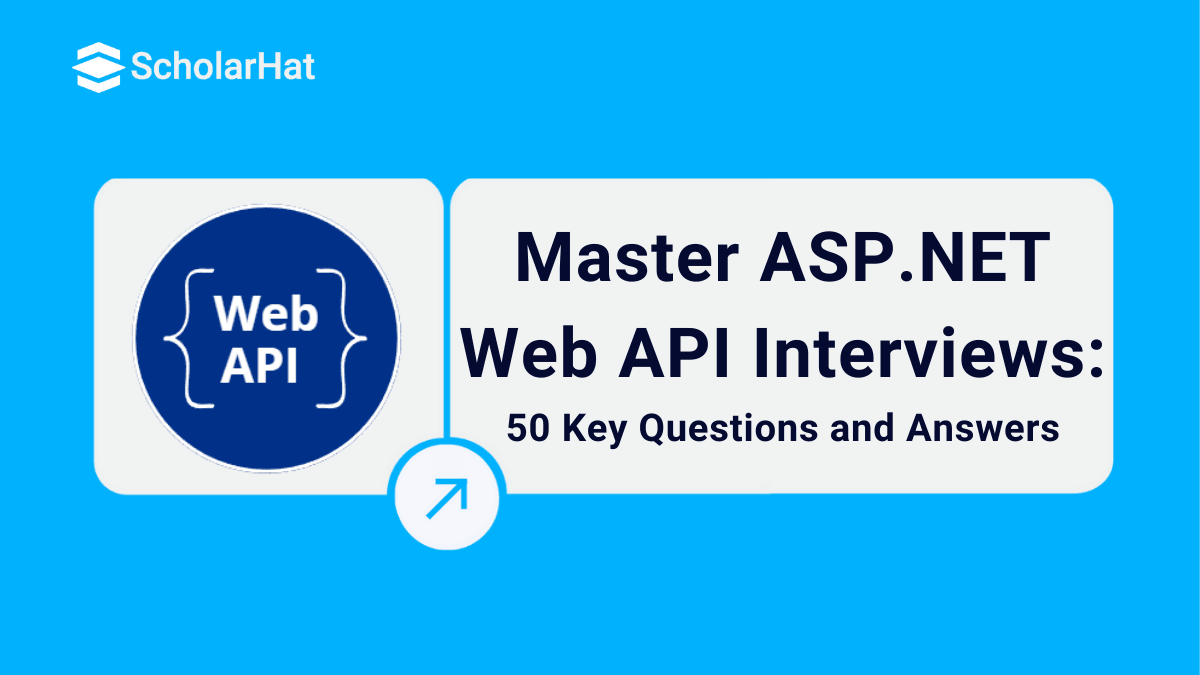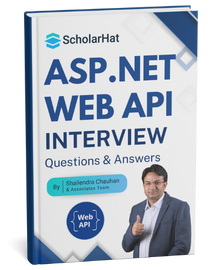28
DecTop Web API Interview Questions & Answers (2025 Guide)
ASP.NET Web API Interview Questions
ASP.NET Web API is a framework provided by Microsoft with which we can easily build HTTP services that can reach a broad of clients, including browsers, mobile, IoT devices, etc. ASP.NET Web API provides an ideal platform for building RESTful applications on the .NET Framework.
Web API is an application programming interface permitting web services to be accessible to browsers and gadgets, such as tablets, versatile, etc. It was to begin with presented in February 2000 by Salesforce. Since that point, Web API has picked up gigantic popularity due to its lightweight, basic administration and stand-alone web administration application.
Whether you're an apprentice or an experienced IT professional attempting to enter the creating field, you must know the Roadmap to become an ASP.NET Web API Developer. You should know its skills and top interview questions for breaking your next interviews.
With the changing innovation, the Internet API field is additionally advancing. In case you're arranging to apply to any Web API positions, In this ASP.NET Web API tutorial, we are going to see 50-plus interview questions and answers.
Learn by doing! Build real-world web APIs with our hands-on ASP.NET MVC with Web API course. Enroll now!
|
ASP.NET Web API Interview Questions for Beginners
1. What is Web API?
API is an abbreviation for Application Programming Interface. A Web API is a Web application programming interface. A Browser API can be used to enhance a web browser's functionality. A Server API can be used to enhance a web server's functionality.
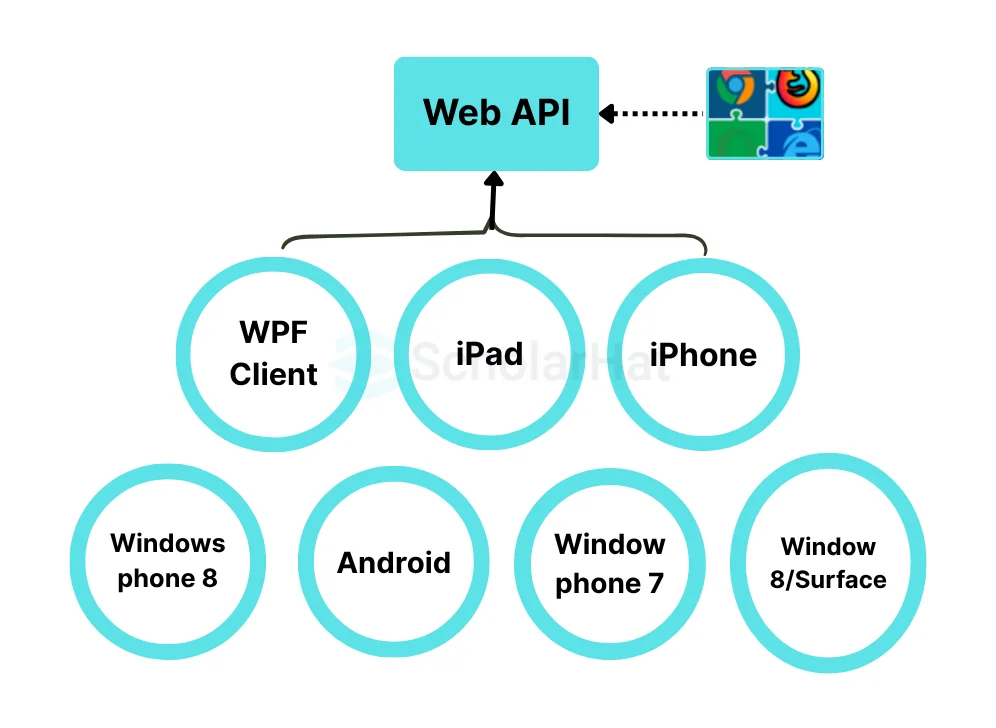
2. Why is Web API required?
A web API is a service that retrieves information or data from a server. It is critical for business growth. Here are some of the reasons why Web API is so important:
- Provides a data access interface for both web pages and client applications.
- Supports a variety of text formats, including XML and JSON.
- Works nicely on low-bandwidth devices.
- Commonly used in the creation of UI/UX, resulting in increased visitors to the website.
- Compatibility with any browser and device.
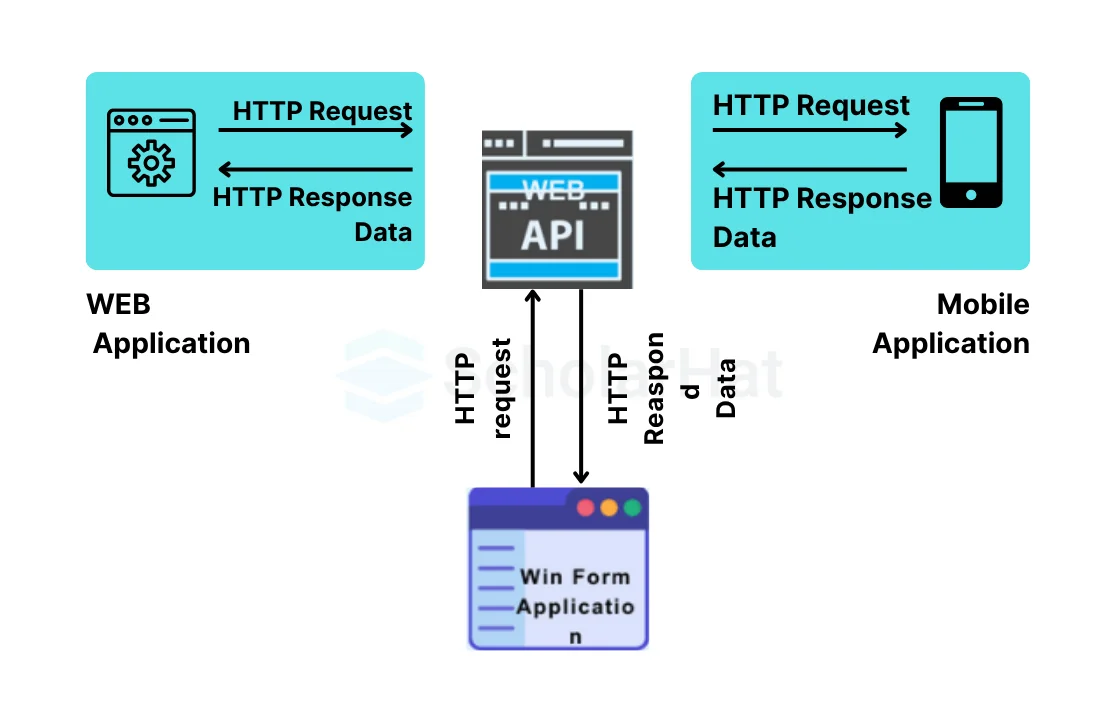
3. Why select Web API?
- It is used to develop simple HTTP Services that are not SOAP-based.
- It is also a simple way to create with Web API. REST Services with WCF
- It is HTTP-based and simple to define, expose, and consume RESTful.
- It is a lightweight architecture that is excellent for devices with limited bandwidth, such as smartphones.
4. Is it right that ASP.NET Web API has replaced WCF?
To suggest that ASP.NET Web API has completely replaced WCF is not entirely accurate. While Web API is the preferred solution for most new HTTP-based applications, WCF is still useful in some situations.
5. What are the advantages of Web API?
- RESTful magic: Uses conventional HTTP methods and lightweight data formats to simplify API design.
- Lightweight champion: Runs quickly with little overhead, making him excellent for mobile and web clients.
- Flexible companion: Works well with a variety of formats (JSON, XML) and hosts (IIS, self-hosted).
- Developer delight: It is simple to learn, configure, and test, which reduces development time.
- Modern Muse: Aligns with current online trends, allowing for easy future integration.
- Scalability superstar: seamlessly handles escalating needs, from modest projects to massive endeavours.
- Community cheer: Support and resources are provided by a thriving development community.
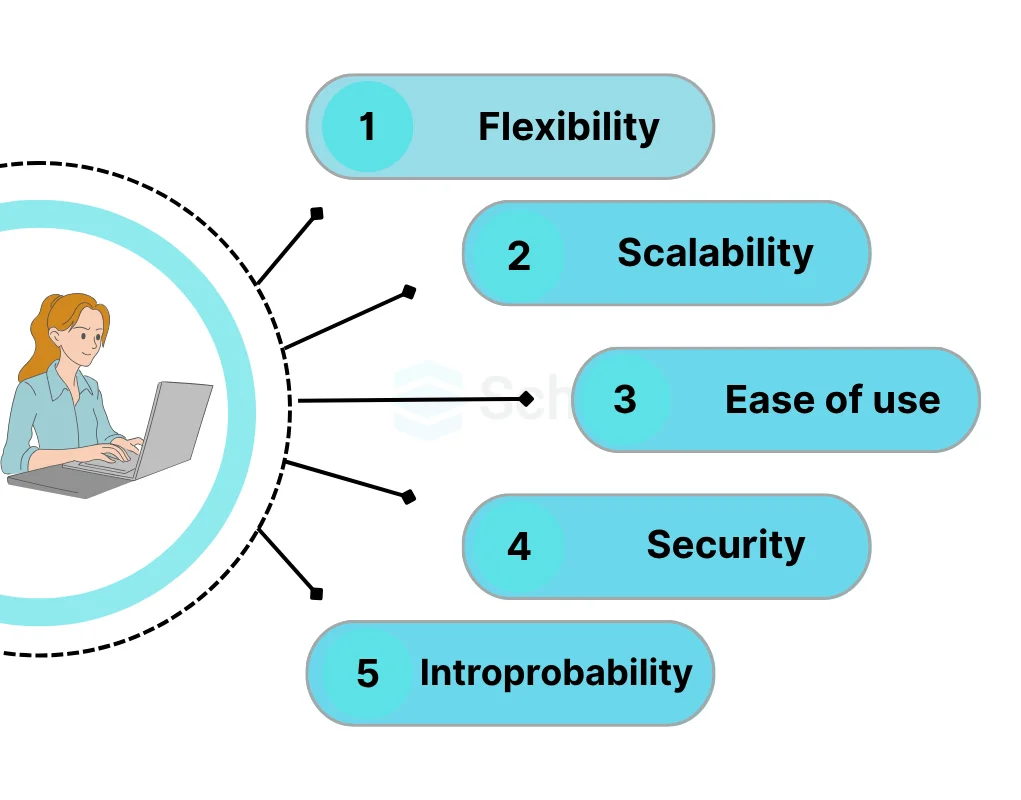
6. What are the main return types supported in Web API?
The following values can be returned by a Web API controller action:
- Void - It will return an empty string.
- HttpResponseMessage - The response will be converted to an HTTP message.
- IHttpActionResult - invokes ExecuteAsync internally to generate a HttpResponseMessage.
- Other types - The serialized return value can be written into the response body.
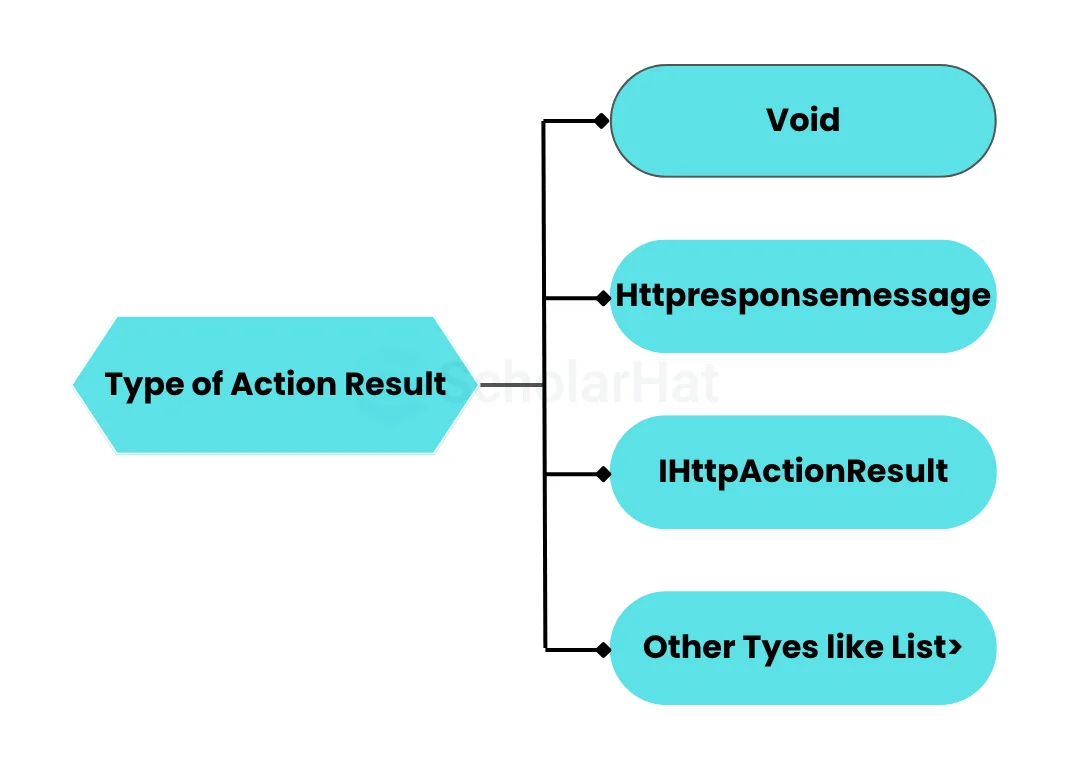
7. Web API supports which protocol?
The HTTP protocol is the primary protocol supported by Web API. This means that it makes use of the well-established and widely recognized HTTP standards for communication between clients and servers.
8. Which .NET framework supports Web API?
The following .NET frameworks enable Web API:
- .NET Framework 4.0 and later: Web API was first introduced in .NET Framework 4.0, and it is now supported in all future versions, including 4.5, 4.6, and 4.8.
- Versions of .NET Core 1.0 and later: .NET Core, a cross-platform and open-source version of .NET, has supported Web API since its initial release and will continue to do so in future editions.
- .NET 5 and later: Web API is naturally supported by.NET 5 and later versions, which unite the.NET Framework and.NET Core.
9. Web API uses which of the following open-source libraries for JSON serialization?
By default, Web API uses the open-source library Json.NET (also known as Newtonsoft.Json) for JSON serialization. It is a well-known, high-performance JSON framework that is commonly used in .NET applications.
10. By default, Web API sends an HTTP response with which of the following status codes for all uncaught exceptions?
By default, Web API returns an HTTP response with the status code 500 (Internal Server Error) for all uncaught errors. This general response indicates a server-side problem but does not provide the client with detailed details about the exception.
11. What is the biggest disadvantage of “Other Return Types” in Web API?
The inability to directly return non-200 status codes is the most significant downside of using "Other Return Types" in Web API.
12. How do you construct HtmlResponseMessage?
While there is no direct class named "HtmlResponseMessage" in ASP.NET Web API, here are two common approaches for building HTTP responses with HTML content:
- Using HttpResponseMessage with StringContent
- Using IHttpActionResult with Content
13. What is Web API Routing?
Web API Routing is the routing of incoming HTTP requests to the correct controller activities within a Web API application. It serves as a dispatcher, ensuring each request is routed to its proper destination.
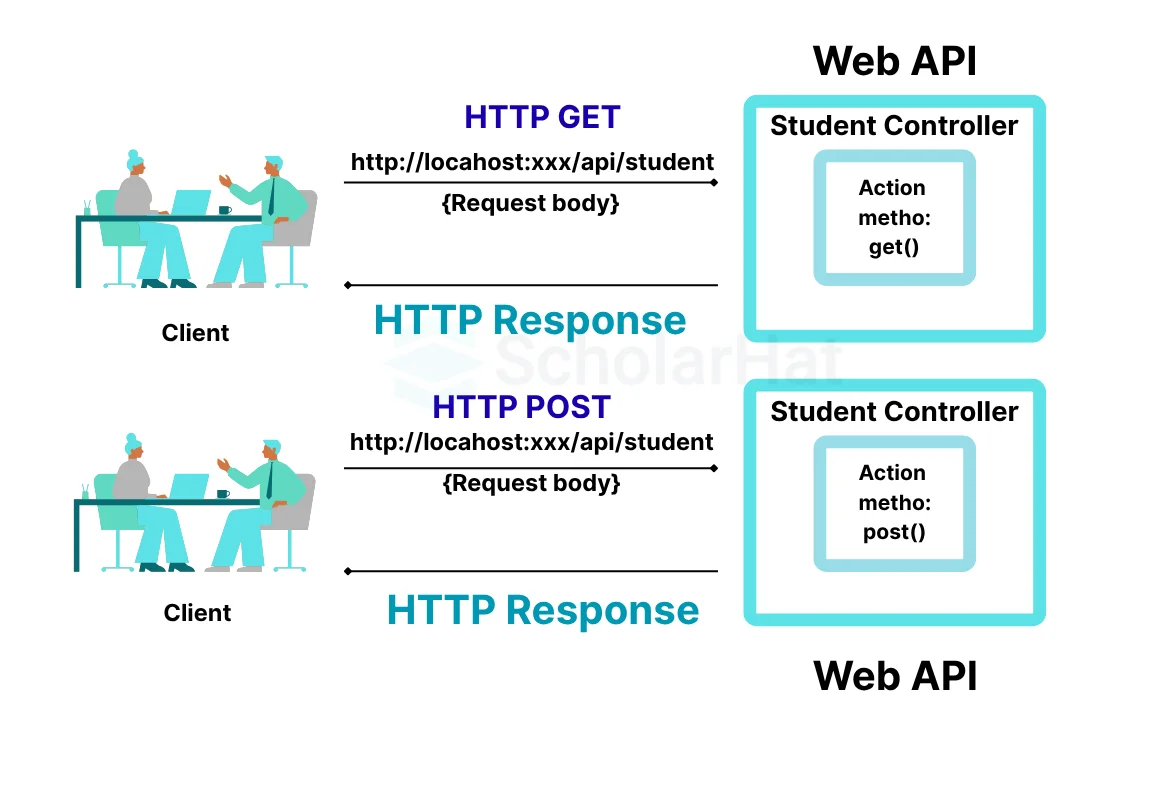
14. What is SOAP?
SOAP is an XML messaging format that is commonly used in online service interactions. It supports sending messages via HTTP or JMS, but additional transport protocols are also supported. It is also an XML-based messaging system used to exchange data between computers.
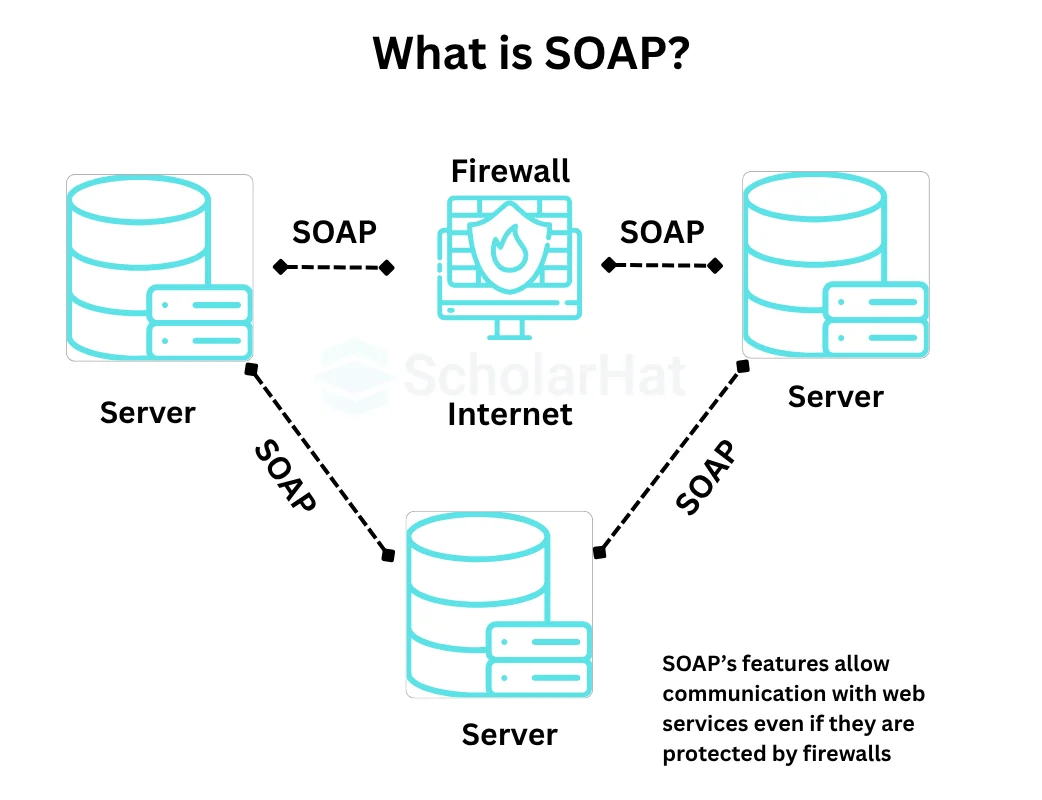
15. What is the benefit of using REST in Web API?
REST is essential and advantageous in Web API for the following reasons:
- It enables minimal data transfer between the client and the server.
- It is simple to use and light.
- It gives you additional options.
- It also manages and regulates numerous types of calls and returns data in a variety of forms.
- It is preferred for use in mobile apps since it requires minimal data transmission between client and server.
- It communicates between machines using basic HTTP calls rather than more complicated choices such as CORBA, COM+, SOAP, or RPC.
16. How can we use Web API with ASP.NET Web Form?
Web API can be used with ASP.NET Web Forms. It consists of three easy steps:
- Construct a Web API Controller.
- Add a routing table to the Global.asax Application_Start function.
- Then, using jQuery AJAX, call the Web API method and retrieve the data.
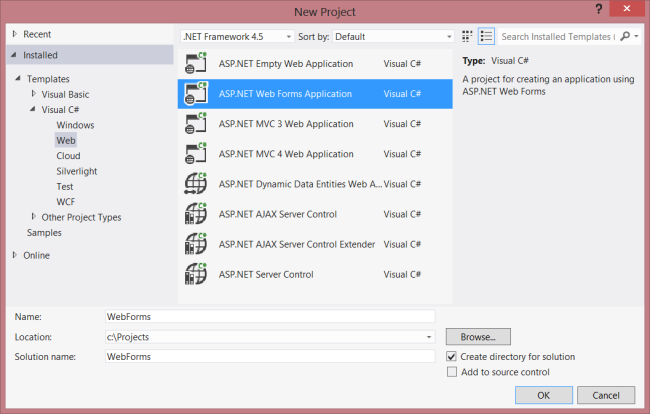
17. How can you limit Access to Web API to a Specific HTTP Verb?
Attribute programming is very important. It is simple to limit access to an ASP.NET Web API method to be called using a specific HTTP method.
18. Can you use Web API with ASP.NET Web Form?
Yes, you may utilize Web API with an ASP.Net web form. Because it comes with the ASP.NET MVC framework. It can, however, be used with an ASP.NET Web Form.
19. How Can we assign an alias name for ASP.NET Web API Action?
To give an ASP.NET Web API action an alias name, use the [ActionName("alias")] attribute on the action method. If you're using custom routes, make sure your route template matches the alias.
Example
ActionName("GetAllProducts")]
public IEnumerable<Product> GetProducts() { ... }20. What is the meaning of TestApi?
TestApi is an API utility library. Using this library, tester developers can design testing tools and automated tests for .NET applications that use data structures and algorithms.
ASP.NET Web API Interview Questions for Intermediate
21. Explain exception filters.
Exception filters are commonly used to manage all unhandled exceptions generated by web API. It conforms to the IExceptionFilters interface. It is the simplest and most adaptable to apply. This filter is run anytime the controller method throws an unhandled exception that is not a HttpResponseExecption exception at any level.
22. How can we register an exception filter from the action?
While direct exception filter registration from within an operation is not allowed, here are two effective approaches:
- Global Configuration: Add the filter to GlobalConfiguration.Configuration.Filters the collection for application-wide use.
- Controller-Level Attribute: Add the filter to the controller class as an attribute to handle exceptions within that controller.
23. How you can return View from the ASP.NET Web API method?
The view cannot be returned from the ASP.NET Web API function. The ASP.NET web API creates HTTP services that deliver raw data or information. In an ASP.NET MVC application, the ApiController only renders data that has been serialized and sent to the client. A controller can be used to give standard views.
24. How to register exception filter globally?
The following code can be used to register an exception filter globally:
GlobalConfiguration.Configuration.Filters.Add (new MyTestCustomerStore.NotImplExceptionFilterAttribute());25. Explain what is REST and RESTFUL.
- REST stands for REpresentational State Transfer, and it is a completely new way of developing a web program.
- RESTful services are those that are created using REST architectural concepts. It focuses on system resources and how the state of those resources should be transmitted via HTTP.
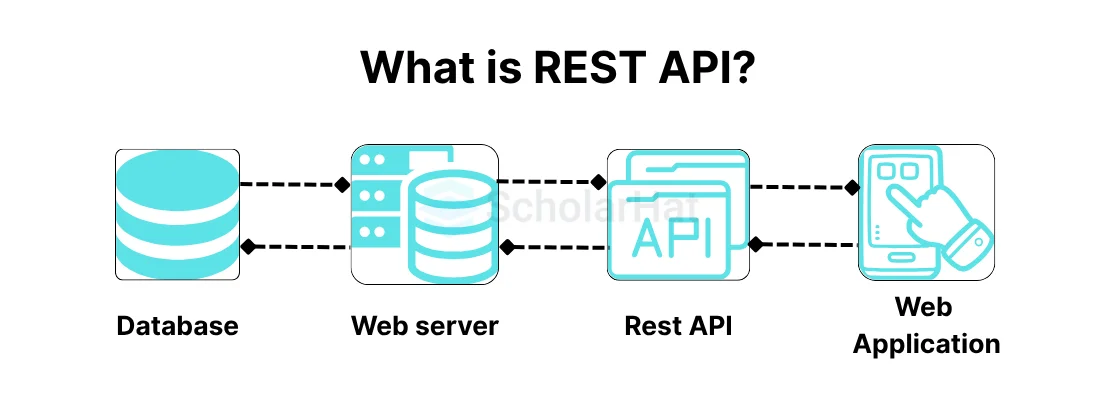
26. Explain ASP.NET Web API routing.
Routing is the process of matching a URI to a Web API operation. It aids in determining which action and controller to invoke. The controller is a class that handles HTTP requests and has public methods known as action methods.
Routing can be implemented in two ways:
- Conventional routing: This style of routing selects the controller and execution mode using route templates.
- Attribute-based routing: Web API 2 supports this form of sophisticated routing. It makes use of characteristics to define and add routes to route tables.
27. Explain error handling in Web API.
Web API provides several error-handling classes:
- HttpResponseException: Returns the HTTP status code specified in the Constructor of the exception.
- HttpError: Uses the HttpResponseMessage to return the meaningful error code to the client.
- Exception filters: These are useful when the controller action method throws an unhandled exception or error.
28. What New Features come with ASP.NET Web API 2.0?
The following are the most recent ASP.NET Web API framework v2.0 features:
- Attribute Routing
- Cross-Origin Resource Sharing
- External Authentication
- Open Web Interface NET
- HttpActionResult
- Web API OData
29. How can you restrict access methods to specific HTTP verbs in Web API?
With the help of Attributes (like HTTP verbs), It is possible to implement access restrictions in Web API. It is possible to define HTTP verbs as an attribute to restrict access.
Example:
HttpPost]public void Method1(Class obj){//logic30. How can you pass multiple complex types in Web API?
There are two typical techniques for passing numerous complicated types in Web API:
- Include them in a container class: Make a single class to hold the complicated kinds, then pass it as a parameter.
- Make use of a custom model binder: Implement a model binder to map incoming data as individual parameters to numerous complicated types.
31. Write a code for passing ArrayList in Web API.
Here's a code snippet demonstrating how to pass an ArrayList in Web API
// Controller Action
public HttpResponseMessage PostProductList([FromBody] ArrayList productList)
{
// Process the ArrayList of products here
// ...
}// Client-side request (example using JavaScript's Fetch API)
const productList = [{ name: "Product 1", price: 10 }, { name: "Product 2", price: 15 }];
fetch("/api/products", {
method: "POST",
headers: { "Content-Type": "application/json" },
body: JSON.stringify(productList)
})
.then(response => { ... });32. Name the tools or API for developing or testing web API.
Web service testing tools for REST APIs include:
- Jersey API
- CFX
- Axis
- Restlet
33. What is REST?
It is an updated version of a web service. It defines the architecture of networked systems. It does not necessitate more bandwidth when sending requests to the server. It only includes the JSON message.
34. How to unit test Web API?
Fiddler is a well-known unit testing tool for Web APIs. It is a free debugging proxy that allows any browser to compose, execute, and test multiple HTTP requests. It also effectively tests RESTful web services.
To unit test, use the Fiddler tool and perform the following steps:
Fiddler - Compose Tab -> Request Headers -> Request Body, then execute.
35. How can we restrict access to methods with specific HTTP verbs in Web API?
For this feature, attribute programming can be used. Web API also allows you to restrict access to calling methods by using specified HTTP verbs. HTTP verbs can also be defined as attributes over methods.
ASP.NET Web API Interview Questions for Experienced
36. What is the usage of DelegatingHandler?
Within the ASP.NET Web API, DelegatingHandler creates a custom Server-Side HTTP Message Handler. It is used to represent Message Handlers before the message is routed in Web API.
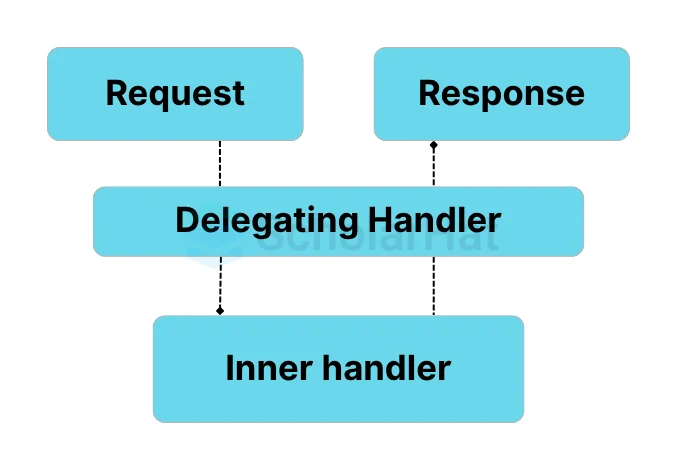
37. How can we register an exception filter from the action?
While direct registration from within an action is not possible, here are two possible alternatives:
- Global Registration: Enhance GlobalConfiguration with filters.Configuration.Filters for application-wide use.
- Controller-Level Attribute: Add filters to controller classes as attributes to handle errors within certain controllers.
38. Tell me the code snippet to show how we can return 404 errors from HttpError.
Here are two popular methods for returning 404 errors using HttpError:
Throwing HttpResponseException
Returning IHttpActionResultThrowing HttpResponseException
public HttpResponseMessage GetProduct(int id)
{
var product = _productRepository.GetProductById(id);
if (product == null)
{
throw new HttpResponseException(HttpStatusCode.NotFound);
} // Return product details if found
...
}Returning IHttpActionResult
public IHttpActionResult GetProduct(int id)
{
var product = _productRepository.GetProductById(id);
if (product == null)
{
return NotFound(); // Uses the built-in NotFound() method
} // Return product details if found
...
}39. Explain the code snippet to register exception filters from the controller.
While it is not possible to explicitly register exception filters from within an action, below are the two basic techniques for achieving similar behavior.
Global Configuration
Register filters in the GlobalConfiguration globally.Configuration.Filters collection in your Global.asax file's Application_Start method. The filters are now applied to all controllers in your application.
Example
protected void Application_Start()
{
// ... other configuration GlobalConfiguration.Configuration.Filters.Add(new MyCustomExceptionFilterAttribute());
}Controller-Level Attribute
Filters can be applied to individual controller classes as properties to handle exceptions within those controllers.
[MyCustomExceptionFilter]
public class ProductsController: ApiController
{
// ... actions
}40. Web API supports which protocol?
Web API generally communicates over the Hypertext Transfer Protocol (HTTP). This implies it employs HTTP methods to specify operations (GET, POST, PUT, DELETE, etc.), and HTTP status codes to indicate response outcomes, and often transfers data in formats like JSON or XML over HTTP.
41. Which frameworks are compatible with building web-based API services?
The following are some popular frameworks for developing web-based API services:
- ASP.NET Core: ASP.NET Core is a multi-platform framework for developing online applications and APIs.
- Django REST Framework: A Python-based API development toolkit.
- Flask-RESTful: A lightweight Flask framework plugin that facilitates API development.
- Spring Boot: Spring Boot is a Java framework that is well-known for its fast development and production-ready features.
- Express.js: Express.js is a Node.js framework noted for its flexibility and minimalism in the development of web applications and APIs.
42. Web API uses which library for JSON serialization?
Web API uses the Json.NET package for JSON serialization.
43. By default, Web API sends an HTTP response with which of the following status codes for all uncaught exceptions?
For all uncaught exceptions, Web API sends an HTTP response with the status code 500 Internal Server Error. This indicates a generic server-side fault without providing the client with specific data about the issue.
44. Explain the method to handle errors using HttpError in Web API.
HttpError was used in WEB API to throw error information in the response body. Along with this, you can use the "CreateErrorResponse" method, which is defined in the "HttpRequestMessageExtension."
45. Is it possible to use Web API 2 in a C# console application?
Yes, you may utilize Web API 2 in any application, including Console Application, MVC, Angular JS, and others.
46. How to handle errors in Web API?
Error handling classes are accessible in Web API. HttpError, HttpResponseException, Exception Filters, and Registering Exception Filters are among them.
47. What is the benefit of WebAPI over WCF?
WCF services use the SOAP protocol, whereas HTTP never does. Because SOAP is not used, WebAPI services are lightweight. It also minimizes the amount of data transferred to reestablish service. Furthermore, it never requires excessive setting. As a result, the client can interact with the service using HTTP verbs.
48. State differences between MVC and WebAPI
The MVC framework is used to create applications with user interfaces. Views can be utilized to provide a user interface for this purpose.
WebAPI is used to create HTTP services. Other programs can also use the WebAPI methods to retrieve the data.
49. Who can consume WebAPI?
WebAPI can be used by any client that supports HTTP verbs like GET, PUT, DELETE, and POST. WebAPI services are relatively simple to consume because they do not require any configuration. In addition, portable devices such as mobile devices can readily consume WebAPI, which is one of the technology's most significant advantages.
50. Explain the different HTTP methods.
There are 8 HTTP methods:
- GET: Uses a specific URI to retrieve data from the server.
- HEAD: Like GET, but just sends the status line and header section.
- PUT: Replace all existing resources with the uploaded content and update them.
- POST: Send data to the appropriate server.
- DELETE: Deletes all current resources specified by a URI.
- OPTIONS: Specifies the target resource's communication options.
- CONNECT: Constructs a tunnel to the server based on a URI.
- TRACE: Runs a message loop-back test along the path to the destination resource.
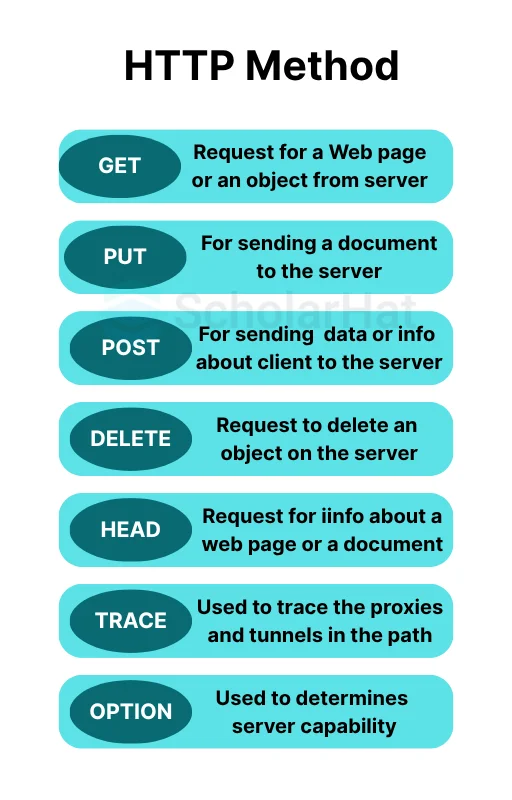
51. What is the difference between ApiController and Controller?
Here, ApiController specializes in returning data arranged in series and sent to the client.
public class TweetsController : ApiController
{
// GET: /Api/Tweets/
public List Get()
{
return Twitter.GetTweets();
}
}Here, Controller, on the other hand, provides normal views and handles HTTP requests.
public class TweetsController : Controller
{
// GET: /Tweets/ [HttpGet] public ActionResult Index()
{
return Json(Twitter.GetTweets(), JsonRequestBehavior.AllowGet);
}
}52. What do you mean by Internet Media Types?
Once known as the Mime type, it alludes to the standard plan for recognizing substance on the web such as the sort of data a chunk of information contains.
For illustration, in the event that we get a record over the e-mail as a connection, this identifier can be valuable in knowing the media sort of the connection data contained within the header so that the browser can launch the fitting plug-in.It may be a great hone to know data on media sorts as each web media sort needs to comply with the taking after arranging –
[type]/[tree.] (Optional)[subtype][+suffix](Optional)[;parameters]
Each media sort must have the 'type' and the 'subtype' that demonstrates the sort of data it contains. For occurrence,
Image– type/png- subtype
Application– type/rss- subtype+xml
53. Can a Web API return an HTML View?
Web API cannot return an HTML view. If you want to return views, it is best to use MVC.
54. What is the status code for “Empty return type” in Web API?
The status code 204 will return empty content in the response payload body.
55. What is the difference between XML and JSON?
But for putting away information in a particular arrange, XLM does not do much while JSON may be a lightweight and easy-to-understand organize for putting away information, broadly utilized in JavaScript.
56. How do website owners avoid HTTP status codes?
57. Name a method that validates all controls on a page.
58. How are different HTTP Status Codes categorized?
- 1xx (Informational) – It shows that the server has received a certain request and the process is continuing.
- 2xx (Successful)–It shows that the request was successful and accepted.
- 3xx (Redirection)–It shows that the request has been redirected and its completion will require further action or steps.
- 4xx (Client Error)–It shows that the request for the web page cannot be reached as either it is unavailable or has bad syntax.
- 5xx (Server Error)–It shows that the server was unable to complete a certain request even though the request seems valid.
59. How do parameters get the value in Web API?
The Parameters get value in Web API in the following way:
- Request body
- URI
- Custom Binding
60. Why is the “api/” segment used in Web API routing?
“api/” segment is used to avoid collisions with ASP.NET MVC routing.
61. Skills required for ASP.NET Developer.
- Understanding the ASP.NET Architecture.
- Microsoft Azure.
- Programming Language.
- Client-Side Technologies.
- Database Configuration.
- Data Security.
- Ability to adapt to a New Environment.
- Microsoft Certifications and Soft Skills.
| Download this PDF Now - ASP.NET Web API Interview Questions PDF By Scholarhat |
Summary
In conclusion, mastering ASP.NET Web API concepts is crucial for any developer aiming to build efficient and scalable web services. By reviewing common interview questions, you not only prepare for job interviews but also strengthen your understanding of key topics like routing, controllers, authentication, and versioning.
If you are preparing for the ASP.NET Web API Interview, this ASP.NET Web API Interview Questions and Answers Book can really help you. It has simple questions and answers that are easy to understand. Download and read it for free today!

